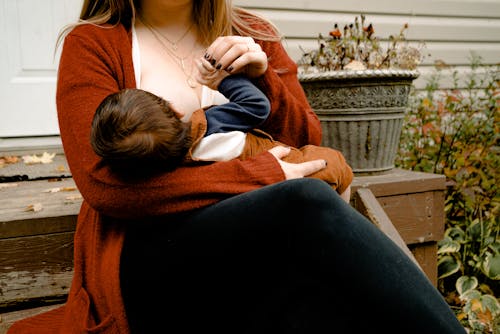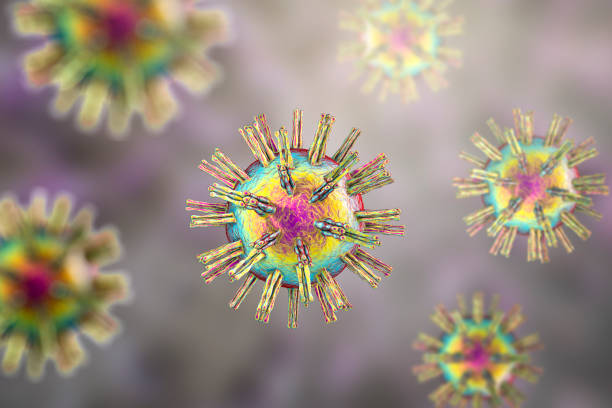
“What does breastfeeding with herpes look like?”
“What can I do to prepare for breastfeeding with herpes simplex virus?”
“How to reduce transmission of HSV when breastfeeding”
Breastfeeding with prior or current Herpes Simplex Virus (HSV) Infection
What is Herpes Simplex Virus (HSV)?
Herpes Simplex Viruses (HSV) are viral infections that typically cause open, painful, red-rimmed sores or blisters on the individual. HSV typically spreads via skin to skin contact and there are two different types; HSV type 1 (HSV-1) or HSV type 2 (HSV-2). HSV-1 typically appears as open sores or blisters (‘cold-sores’) in the mouth area resulting in oral herpes, but can also cause genital herpes. HSV-2 is, in the vast majority of instances, transmitted through sexual contact and provides blisters on the moist lining of the genital or anal organs (genital herpes) and on the skin. The blisters or sores will form a scab after a few days and can appear anywhere on the body, including on the breast or the nipple. Current estimates are that around 67% of people younger than 50 globally have HSV-1 infection, and 13% have HSV-2 infection (World Health Organisation, 2023). Accordingly, transmission to neonates can occur when the infant is exposed to HSV during birth or postnatally. Though neonatal herpes is very rare, occurring in 0.01% of births (10/100,000) globally (World Health Organisation, 2023), it is a serious condition that can lead to cerebral palsy and significant developmental delays (Jaiyeoba et al., 2012 and James et al., 2014). Here we explore what breastfeeding with herpes can look like.

Is HSV infection treatable?
While there are treatments to reduce the severity and length of a HSV outbreak, there is no cure. Antiviral medicines such as Aciclovir, Famciclovir and Valaciclovir can be given as treatments. Treatment for recurrent episodes is most effective when started within 48 hours of the outbreak and sometimes, taking a lower daily dose of one of these medications (a ‘suppressive dose’) can be used in order to prevent an outbreak. Often a ‘suppressive dose’ of acyclovir is recommended for women planning a vaginal birth. However, if a woman contracted HSV in the last trimester it is recommended that she have a caesarean section as there is an increased risk of HSV infection of the newborn of ~30-50% (Money and Stebe, 2023 and Department for Health and Well-being, 2016) compared to 1-3% for recurrent infections or those obtained in the first or second trimester (Management of Perinatal Infections Guideline, 2014). For full flow charts of recommended management of infection during pregnancy, labour, neonatal precautions and the risk of neonatal infection you can look at the guide provided by Management of Perinatal Infections Guideline (2014).
Can you breastfeed with herpes if you have current or prior HSV infection?
The recommendations for breastfeeding with prior HSV infection have previously been quite diverse in past years. Given direct breastmilk transmission is extremely rare (Lamounier et al., 2004) with only one reported situation of infection via breastmilk (Dunkle et al., 1979), and transmission through active herpetic lesions is the primary source of infection (Wambach and Spencer, 2021 and Parra et al., 2013), the recommendations are slowly coming into alignment.
The American Academy of Paediatrics has shifted their recommendation to avoid all breastfeeding with prior Herpes infection to now encouraging breastfeeding provided there are no active lesions. They do encourage thorough hand washing before breastfeeding and if any active lesions, continue pumping breastmilk to maintain milk supply but do not give the direct breast or breastmilk pumped from a breast with active lesions to the baby.
Likewise, the Academy of Breastfeeding Medicine in their protocol on nipple pain and management recommend oral antiviral therapy (such as acyclovir or valaciclovir) for treating primary or recurrent infections, preventing infant contact with lesions and avoiding breastfeeding or feeding expressed breastmilk to infants from an affected breast/nipple until lesions are healed (ABM protocol on nipple pain and management, 2018; Table 1 excerpt).
|
Concern |
Symptoms |
Management |
|
Herpes Simplex |
Small, clustered exquisitely tender vesicles with an erythematous, edematous base Solitary small ulcer Axillary lymphadenopathy |
· Oral antiviral therapy such as acyclovir or valacyclovir should be used in doses recommended for treating primary or recurrent Herpes simplex infections. · Prevent contact between lesions and the infant. · Avoid breastfeeding or feeding expressed breast milk to infants from an affected breast/nipple until the lesions are healed to prevent neonatal herpes infection. |
Precautions to take and suggestions for breastfeeding with HSV infection
HSV infection is mostly problematic for children in the neonatal period, and consequently infection at later ages is not considered to be as large of an issue (e-lactancia, 2019). That said, the following precautions are wise to follow throughout the breastfeeding relationship to help to minimise the infection risk for your infant/child.
Speak to your healthcare provider
In some instances it may be recommended that a suppression dose of antiviral medication be taken by the mother to avoid the potential for an outbreak in the early weeks and months of baby’s life, and if there is an outbreak, can be used (preferably within 48 hours) to hasten healing (Douglas, 2022 and Lawrence and Lawrence, 2015).
Prevent infant’s contact with open sores
As HSV transmission occurs with direct skin contact with active herpetic lesions, it is recommended the baby doesn’t come into contact with any open herpetic lesions on the mother. If there are sores on the breast, but they can be covered to avoid contact with the infant, then breastfeeding can be maintained (Mohrbacher, 2020). However, if covering is not achievable due to the blisters being too close to the nipple then it is recommended that breastfeeding from that breast be avoided until the blisters have completely healed (Mohrbacher, 2020 and e-lactancia, 2019). Once the sores are dried it is considered safe to resume breastfeeding or expressing breastmilk and feeding to baby as usual (ABM protocol on nipple pain and management, 2018; Table 1 excerpt and Mohrbacher, 2020).
Consider antiviral treatments to reduce length of outbreak
Treatment with antiviral medications can help to reduce the length of time of active lesions and consequently may be considered (Lawrence and Lawrence, 2015). For more information about the safety of antivirals when breastfeeding, consider contacting MotherSafe or NPS MedicineWise. However, briefly, the antiviral acyclovir (e-lactancia, 2022) and valacyclovir (e-lactancia, 2022) are both considered very low risk when breastfeeding.
Maintain good hygiene and infection control measures
It is recommended that the mother wash her hands with hot, soapy water before contact with the infant and especially after contact with any herpetic lesions. It is also important to wash (with hot, soapy water) and sterilise pump parts after pumping to avoid the potential for cross-contamination with later expressed breastmilk, and to only touch these pump parts with washed hands (Wambach and Spencer, 2021).
Avoid kissing baby if there are any active herpetic lesions
As above, avoid skin contact between baby and any active herpetic lesions, but it is also recommended to avoid kissing baby when there is an active oral herpes infection (Lawrence and Lawrence, 2015).
Protect breastmilk supply
If not able to breastfeed because of active herpetic lesions that cannot be covered sufficiently (Mohrbacher, 2020) then it is recommended that the mother feed on the unaffected breast if able, and express milk from the affected breast. Disease control measures listed above including using hot, soapy water for washing hands and pump parts and sterilising pump parts after use would be recommended, and milk that came into contact with active lesions would need to be discarded (e-lactancia, 2019). However, expressing breastmilk either by hand or with a pump will help to protect the milk supply and avoid mastitis until active infection passes, and breastfeeding can then be resumed.
